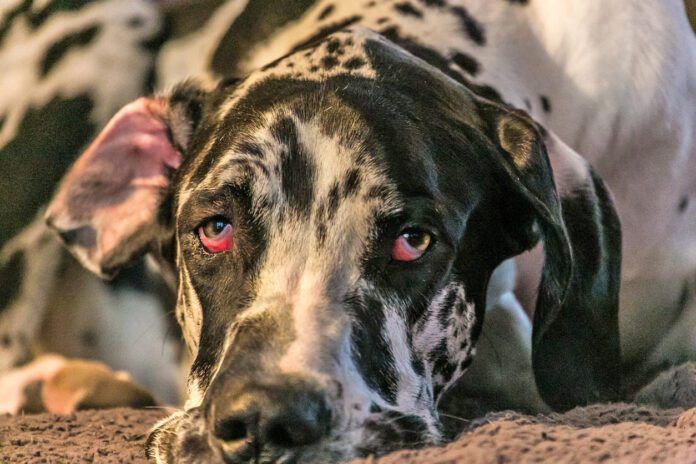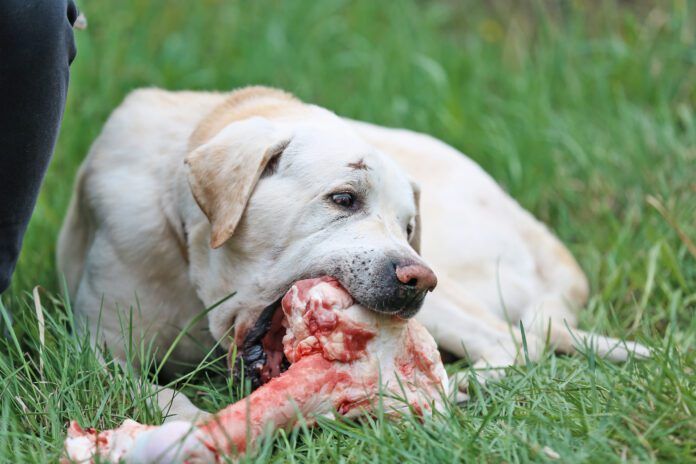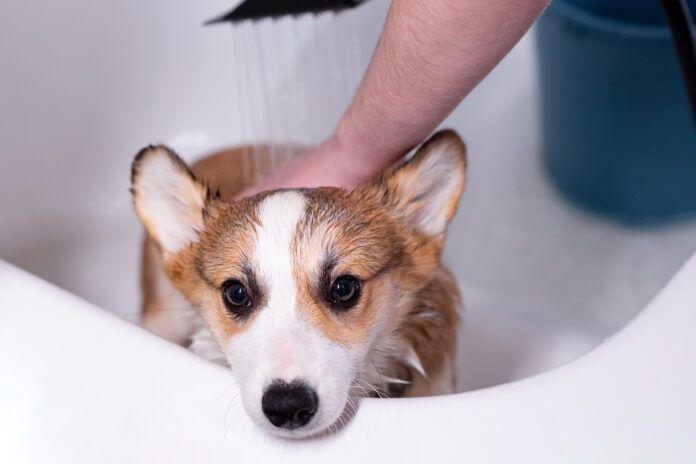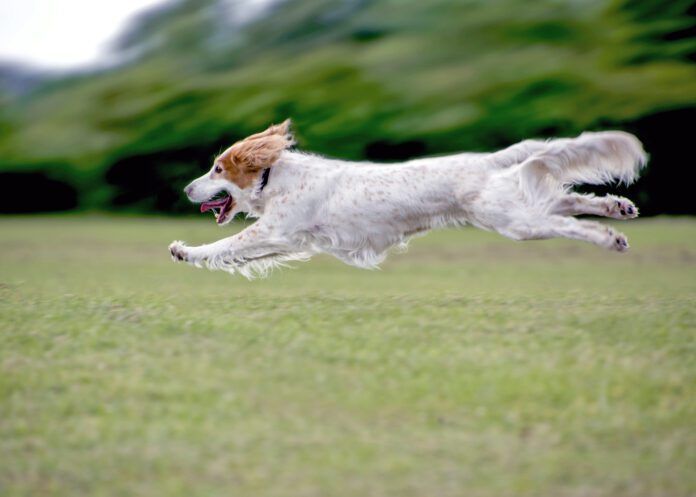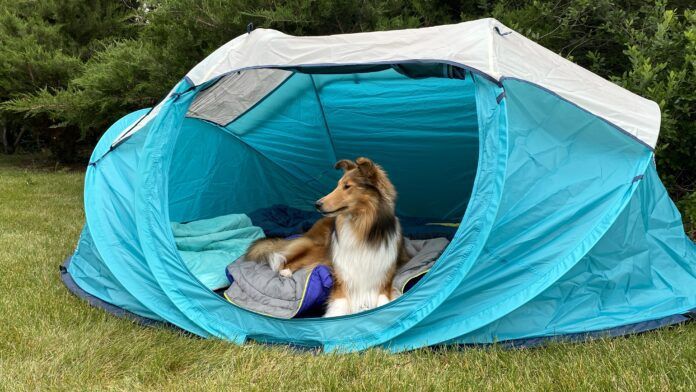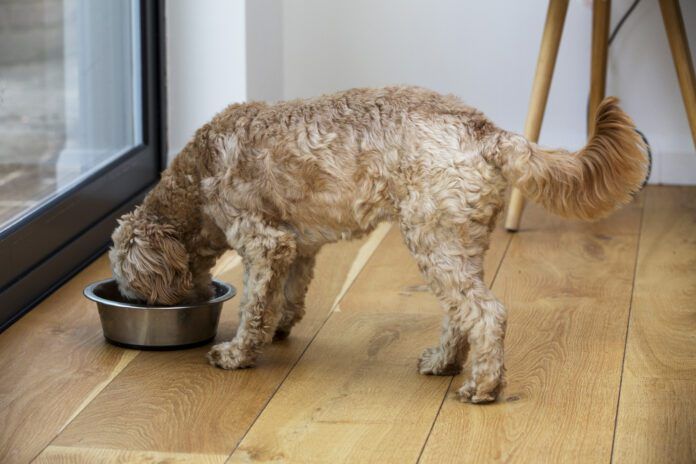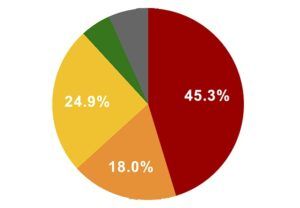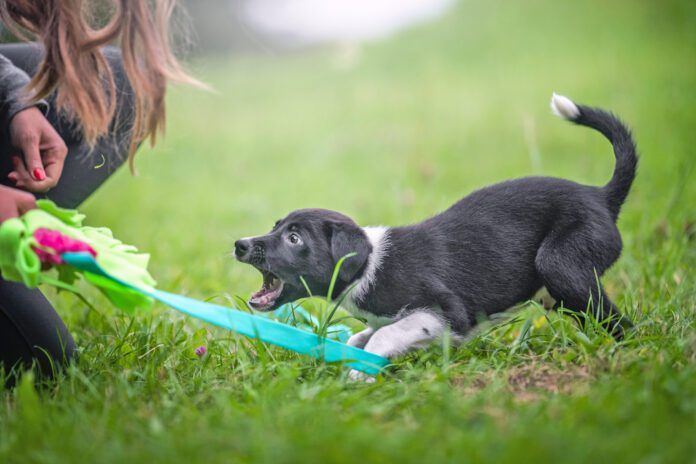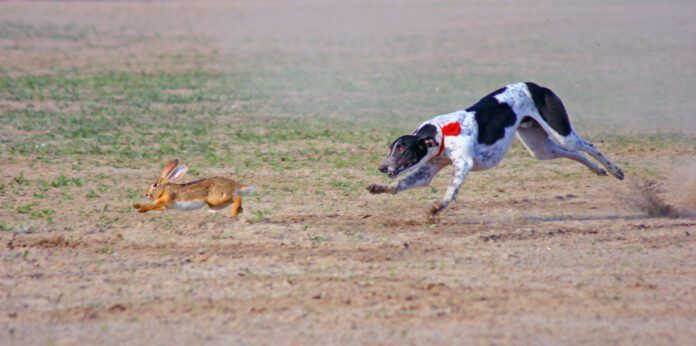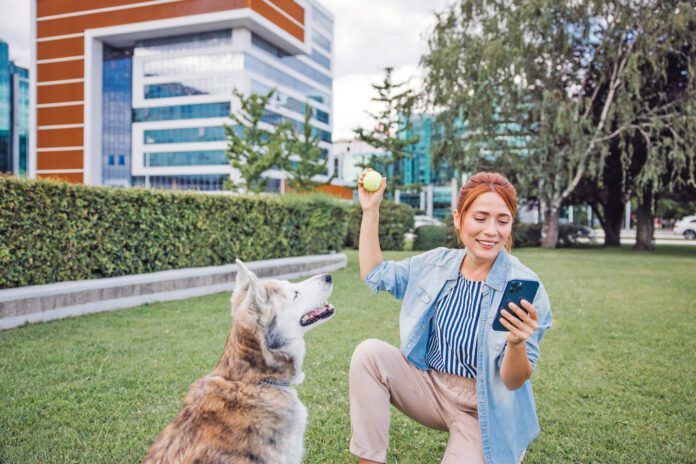Oatmeal has been used for thousands of years to treat human skin irritations. Likewise, it can be useful for soothing skin issues in dogs.
Oatmeal’s anti-inflammatory compounds reduce redness, itching, and swelling, plus oatmeal forms a protective barrier that preserves moisture and balances the skin’s pH.
The chemical composition of colloidal oatmeal includes a high concentration of starches and beta-glucan, which have protective and water-holding properties, its phenols are antioxidant and anti-inflammatory, and its saponins are natural cleansers.
In 2003, colloidal oatmeal was approved by the U.S. Food and Drug Administration (FDA) as a skin protectant, making it one of the few botanical ingredients with that authorization. Today colloidal oatmeal and oat extracts appear in creams, lotions, gels, shampoos, conditioners, burn treatments, and other products for pets and people.
What Is Colloidal Oatmeal?
Colloidal oatmeal is any oatmeal that is so finely ground that it becomes a powder. To make your own, grind or pulse 1 cup of plain, raw, unflavored instant, quick-cooking, steel-cut, or slow-cooking oatmeal or oat groats in a coffee grinder, food processor, or blender. Use the highest setting and process until the oatmeal becomes a very fine powder.
Finely ground oatmeal will rinse away easily, but a simple way to prevent clumping is to strain wet blends through a mesh strainer or stocking, place dry ingredients in a porous fabric bag, tie the oat powder in cheesecloth or gauze fabric, or wrap it in a washcloth or towel that you can soak and squeeze to release the oat water.
Oatmeal baths for dogs can be used to help with conditions such as:
- itchy skin
- hives
- rashes
- burns
- sunburn
- allergies
- dry skin
- dandruff
- dermatitis
- eczema
- hot spots
- inflammation
- insect bites
How To Give Your Dog a Bath with Oatmeal Shampoo
Dozens of oatmeal shampoos have been developed for dogs and puppies, such as DermAllay Oatmeal Shampoo, EarthBath Oatmeal & Aloe Dog Shampoo, Honest Paws 5-in-1 Oatmeal Dog Wash, and Tropiclean Oatmeal Itch Relief Shampoo for Pets.
For safety, have your dog stand on a non-skid mat or towel. Thoroughly wet your dog’s coat and skin with comfortably cool or tepid water. Cool water has a soothing effect of its own, while warm or hot water can exacerbate skin irritations. So can vigorous rubbing as you massage products into the skin or rub the coat with towels. To speed recovery and healing, keep your movements slow, calm, and gentle.
Apply oatmeal shampoo to your dog’s neck, back, and areas of skin discomfort or itching. Progressively massage oatmeal shampoo into the coat and skin, keeping suds away from your dog’s eyes, nose, and mouth. Massage the inside legs, skin folds, feet, ear flaps, and under the tail. Leave the shampoo in place for 5 to 10 minutes so the oatmeal’s healing compounds reach all the skin and coat. Thoroughly rinse your dog with large amounts of cool or mild-temperature water. Allow your dog to shake herself off, then finish drying her with towels. Comb or brush long-haired dogs, being gentle on and around affected areas. High-temperature blow drying is not recommended because it can increase irritation and discomfort in affected areas.
Oatmeal shampoos can be used alone or followed by an oatmeal conditioner such as Vetoquinol Aloe & Oatmeal Conditioner, DermAllay Oatmeal Spray Conditioner, or Zesty Paws Oatmeal Anti-Itch Dog Conditioner. Follow label directions.
Do-It-Yourself Oatmeal Shampoo for Dogs
The easiest and least expensive way to help your itching pup is to make your own oatmeal shampoo. This formula works well for puppies and adult dogs:
Mix or blend these ingredients well, then apply as described above.
Do-It-Yourself Dog Oatmeal Conditioner
- 1 cup lukewarm water
- 2 tablespoons aloe vera gel
- 1/4 cup finely ground oats or oatmeal
Combine these ingredients in a blender or shake them in a jar until thoroughly combined. Pour the blend into a spray bottle, straining it if necessary, and apply it to your dog, then massage or brush it through the coat. Let the conditioner stand for 5 to 10 minutes before rinsing with plain water. This blend is safe to apply to your dog’s face, nose, and eye area.
Do-It-Yourself Oatmeal Paste to Soothe Dog Skin
Create a paste with ground oatmeal and water for direct application to insect bites, rashes, hot spots, or especially itchy areas. Start with equal parts colloidal oatmeal and water, such as 1/2 cup of each. If you need more, double the recipe. You want a paste that will be easy to apply and that will adhere to your dog’s skin and coat.
Gently massage the paste into affected areas so that the paste reaches all the way to the skin, then cover it with a damp towel or cloth or spray the applied paste with water to maintain moisture, and keep your dog still for 5 to 10 minutes before rinsing it off. This treatment can be applied more than once a day if needed.
How To Make an Oatmeal Soaking Bath for Your Dog
An oatmeal soaking bath is different from an oatmeal shampoo because it doesn’t involve soap. Its key ingredients are finely ground oatmeal and a tub, bucket, or basin of tepid water. Oatmeal baths are recommended for uncomfortable skin problems, everything from flea bites to allergic reactions, itchy skin, and rashes.
The most well-known oatmeal bath is Aveeno’s Soothing Oatmeal Bath Treatment, whose only ingredient is colloidal oatmeal.
To make a colloidal oatmeal bath for your dog:
- In a blender or food processor, grind 1 cup of plain, uncooked oatmeal until it becomes a fine powder.
- Stir the ground oatmeal into a tub, bucket, or large basin of comfortably warm or cool water.
- Place your dog in the bath and sponge the oatmeal water over your dog or place your dog in a T-shirt that you soak with bath water. The goal is to thoroughly cover all your dog’s skin with the soothing oatmeal water. Plain oatmeal bath water is safe to apply to your dog’s face and nose.
- Leave the oatmeal water in direct contact with your dog’s skin and coat for 10 to 15 minutes.
- Gently rinse well and pat dry with towels.
How Often Should You Give Your Dog an Oatmeal Bath?
Most experts recommend giving dogs oatmeal baths as needed. For example, a healthy dog whose coat is in good condition might benefit from a monthly oatmeal bath, while a dog with environmental allergies and really itchy skin could have two or three oatmeal baths per week until symptoms subside.
What If Your Dog Has Sensitive Skin?
Oatmeal baths are well tolerated by dogs and puppies, but if your dog has a history of topical allergies, try a patch test first. Create a paste by mixing finely ground oatmeal with a small amount of water and apply a dab to your dog’s bare abdomen, inner thigh, or behind the ear. Gently massage the oatmeal, then leave it in place for up to 24 hours. Check for any redness, swelling, or irritation before and after rinsing the area. If the skin looks undisturbed, your pup should enjoy good results from oatmeal treatments. You can patch-test oatmeal shampoos or conditioners by placing a small amount of diluted product on a small area of bare skin and observing the result. If your pup experiences any redness, swelling, itching, or irritation, rinse the area well and choose a different product.





